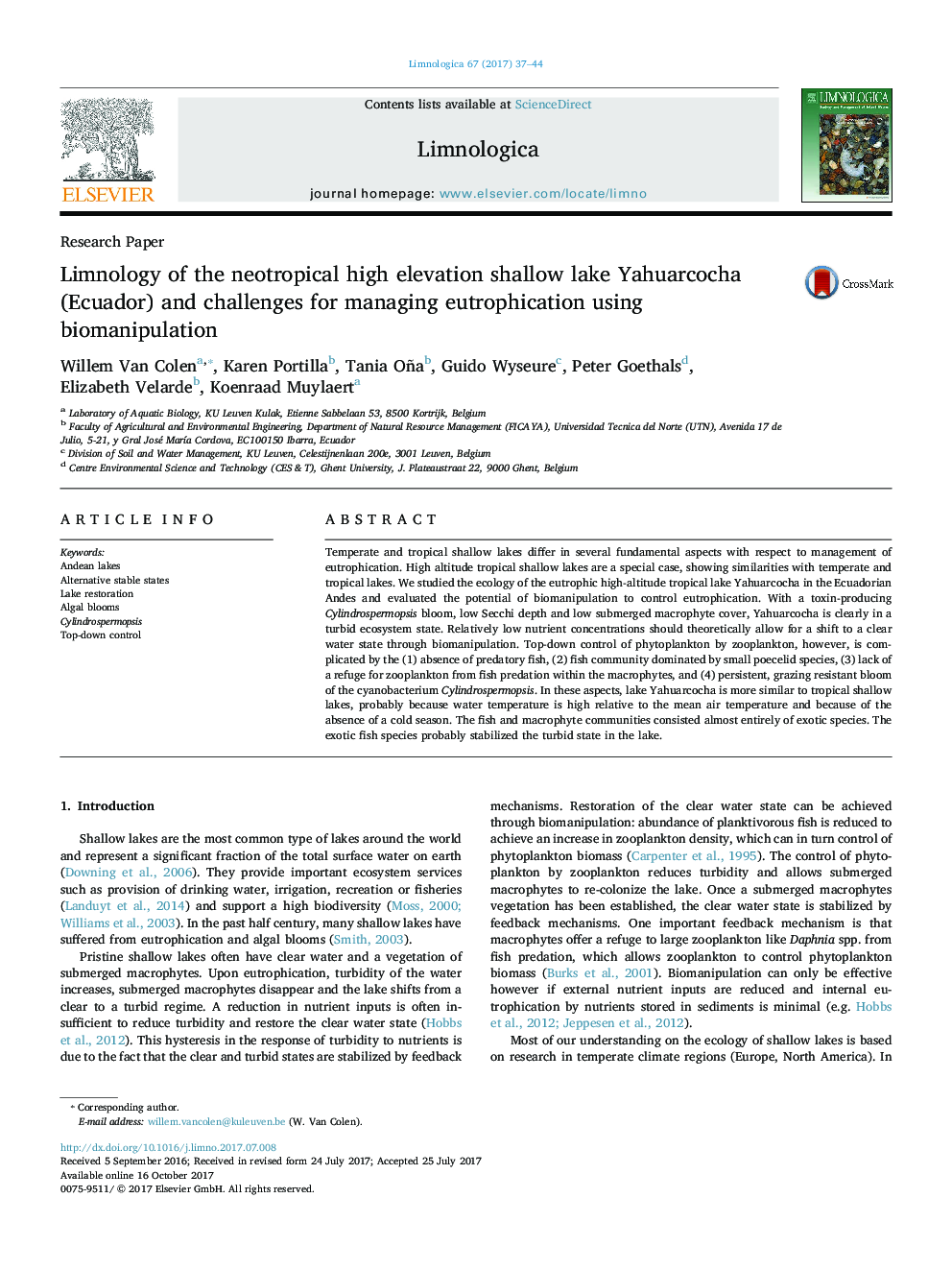| Article ID | Journal | Published Year | Pages | File Type |
|---|---|---|---|---|
| 8849437 | Limnologica - Ecology and Management of Inland Waters | 2017 | 8 Pages |
Abstract
Temperate and tropical shallow lakes differ in several fundamental aspects with respect to management of eutrophication. High altitude tropical shallow lakes are a special case, showing similarities with temperate and tropical lakes. We studied the ecology of the eutrophic high-altitude tropical lake Yahuarcocha in the Ecuadorian Andes and evaluated the potential of biomanipulation to control eutrophication. With a toxin-producing Cylindrospermopsis bloom, low Secchi depth and low submerged macrophyte cover, Yahuarcocha is clearly in a turbid ecosystem state. Relatively low nutrient concentrations should theoretically allow for a shift to a clear water state through biomanipulation. Top-down control of phytoplankton by zooplankton, however, is complicated by the (1) absence of predatory fish, (2) fish community dominated by small poecelid species, (3) lack of a refuge for zooplankton from fish predation within the macrophytes, and (4) persistent, grazing resistant bloom of the cyanobacterium Cylindrospermopsis. In these aspects, lake Yahuarcocha is more similar to tropical shallow lakes, probably because water temperature is high relative to the mean air temperature and because of the absence of a cold season. The fish and macrophyte communities consisted almost entirely of exotic species. The exotic fish species probably stabilized the turbid state in the lake.
Related Topics
Life Sciences
Agricultural and Biological Sciences
Aquatic Science
Authors
Willem Van Colen, Karen Portilla, Tania Oña, Guido Wyseure, Peter Goethals, Elizabeth Velarde, Koenraad Muylaert,
